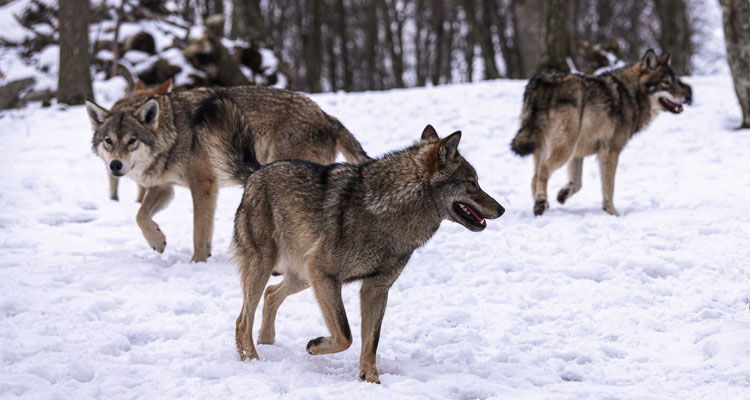
Pam Lewison of the Washington Policy Center shares her thoughts on the discussions about the need to preserve the growth of gray wolves
Pam Lewison
Washington Policy Center
Gray wolves are thriving in Washington state and their numbers have consistently increased year-over-year. Yet, we are continuing to have discussions about the need to preserve their growth.

The Washington State Department of Fish & Wildlife (WDFW) is currently seeking comments on rule changes to make use of all non-lethal deterrents mandatory in certain parts of the state before wolves proven to be depredating livestock can be lethally removed and language that would formalize the current response process in cases of depredations.
The need to tighten the rules is odd, given the rapid increase in the wolf population. The pressure comes from Governor Inslee who called for a significant reduction in the number of wolves killed after attacks on livestock.
The rulemaking would make it more difficult for ranchers and WDFW responders to deal with problem wolves by creating “chronic conflict zones” in which ranchers would likely be required to first prove they are employing all means of non-lethal deterrents before wolves can be lethally removed. Currently, the use of non-lethal deterrents is highly encouraged but not required statewide.
Rather than creating a blanket approach in areas of known repeated livestock depredation, ranchers and WDFW staff should create tailored approaches for individual ranches. WDFW data identifies nearly 1,100 livestock producers total but does not designate how many are inside areas that would be classified as “chronic conflict zones.”
The data also show 98 percent of livestock producers are small business owners who would need to rely upon cost-sharing to implement non-lethal deterrents, including expensive approaches like hiring a range rider whose job is to watch a herd and prevent conflicts. Currently the state funds programs to provide range riders. If range riders are required to meet the rule, the state should make the rule contingent on funding from the state to pay these costs.
The most recent report from WDFW on Gray Wolf recovery in our state was published in April 2021 and it suggests there is no need for such zones. There were just two wolves “removed by the department in response to wolf-caused livestock conflict” in 2021.
Notably, the Confederated Tribes of the Colville Reservation consider the wolf population to be recovered on their lands and have stopped tracking their numbers so the reporting data they shared with WDFW is from the previous winter’s count.
The ongoing federal debate over the Gray Wolf continues as well and must be considered in any discussion of recovery in our state. In February of this year, Gray Wolves were returned to “endangered” status under the Endangered Species Act in the western two-thirds of Washington state with the eastern third of the state falling within the legal boundary of the Northern Rocky Mountains and the delisted area.
Washington state’s approach to wolf management and the people who live with predators needs to change. Rather than pushing on-the-ground experiences to the side, we need to take those experiences into account as the most relevant information available.
The comment period on the rulemaking ends April 11. Comments can be submitted here.
Pam Lewison is the director of the Initiative for Agriculture.




